Blue UAS
The Full List of DOD Approved "Blue Drones"
Blue UAS are drones approved by the U.S. Department of Defense (DOD) for use by the federal government. (UAS = Uncrewed Aerial Systems—or, in other words, drones.)
To be given the Blue UAS designation drones must meet specific, rigorous standards related to security and trusted technology. These standards ensure that the drones don’t pose risks associated with potential data breaches or unwanted data transmission to foreign entities.
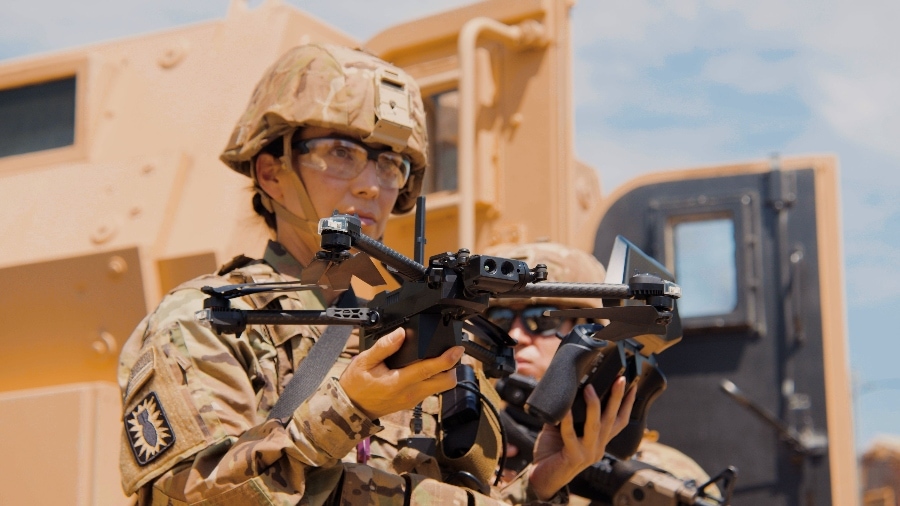
The Skydio X2D | Credit: Skydio
When the Pentagon first rolled out the Blue UAS program back in 2020 there were only 10 approved drone models on the list.
From that foundation, the Defense Innovation Unit (DIU)—the sector of the DOD responsible for the Blue UAS initiative—grew the program, with a focus on speeding the vetting process for including new drones on the Blue UAS list.
Now, there are over 14 drone companies and over 20 drones on the list, with more being added all the time.
In this guide to Blue UAS we cover what the Blue UAS program is in more detail, what’s required to become a Blue UAS, and all of the drones that have been given the Blue UAS designation.
Just want to see the list? Jump there now.
Here are the topics we cover in this guide in case you’d like to jump around:
- What Is Blue UAS?
- Blue UAS List—All of the Approved DIU Blue Drones
- Blue UAS Requirements
- What Is the Difference Between Green and Blue UAS?
What Is Blue UAS?
Blue UAS refers to a program created by the U.S. Department of Defense that identifies and approves drones for government use.
These “blue drones” must meet stringent security and operational standards, going through a strict vetting process to ensure they’re suitable for military and federal applications.
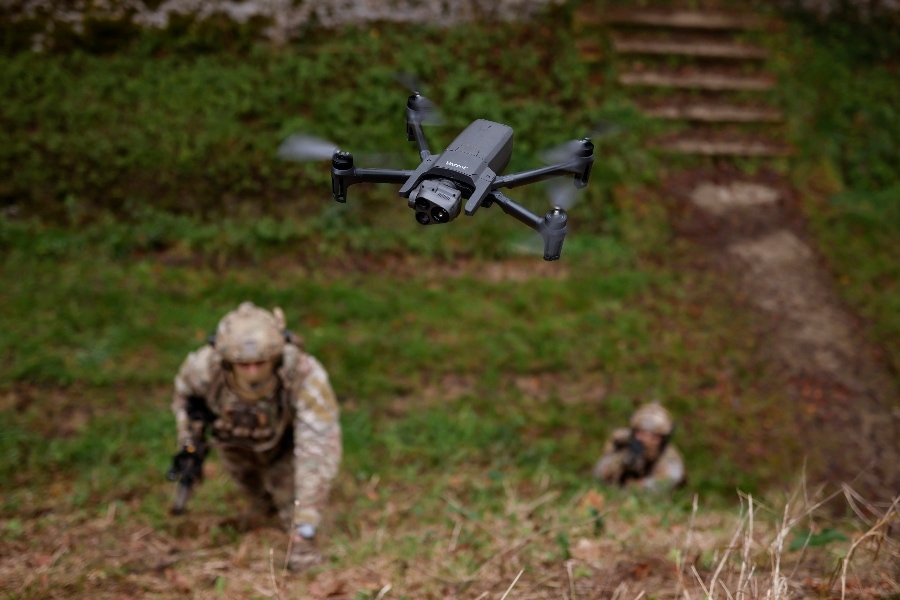
The Parrot ANAFI USA, GOV Edition | Credit: Parrot
The Blue UAS designation also implies compliance with the National Defense Authorization Act (NDAA), emphasizing the drones’ security, reliability, and suitability for critical operations.
In the context of Blue UAS and drones, compliance with the NDAA is all about the supply chain—put simply, if a drone isn’t made in or use parts from a “covered foreign country” then it’s NDAA-compliant.
Covered foreign countries are those that could be considered to have interests counter to those of the U.S.—specifically, China, North Korea, Russia, and Iran.
Why Was the Blue UAS Program Launched?
The Blue UAS program was first formed in response to concerns that drones made by foreign companies, especially those from covered foreign countries like China, might secretly have backdoors or other vulnerabilities that would compromise the data they collect or the networks they connect to.
This concern has risen to such prominence over the last four years that in early 2024 Chinese drones were completely banned from use by the federal government.
Does the DOD Have to Buy Blue UAS Drones?
No. But it is a lot easier to do so.
While the Blue UAS program provides a streamlined pathway for government procurement, it does not restrict the DOD from purchasing non-Blue, certified compliant UAS that fit their mission needs.
That being said, being listed as Blue UAS can significantly enhance a company’s credibility and marketability within the defense sector.
And the Blue UAS label can help companies sell their drones to private companies as well. For large, security- and image-concerned clients, buying Blue UAS could be appealing since it’s a way to show that they’re taking every precaution when it comes to security.
Can a Drone Be Removed from the Blue UAS List?
Yes.
A drone can be taken off the Blue UAS list if:
- There isn’t enough demand for it from the DOD.
- Its capabilities no longer meet the DOD’s needs.
- Cybersecurity issues in the drone aren’t addressed within a designated timeline, whether through inaction or inability.
- The drone or critical components of the drone are End-of-Life, or will no longer be updated.
- Significant changes are rolled out to the drone without formal approval by DIU.
Blue UAS List—All of the Approved DIU Blue Drones
In total, 14 companies have drones that have been approved for the Blue UAS list.
Of those 14 companies, five of them have multiple platforms that have been approved by the DOD for the list—Skydio, Harris Aerial, Inspired Flight, Teal Drones, and Parrot.
In total, when you count all the drones from each of these companies, there are 24 DOD-approved drones on the list (as of January, 2024).
Below you’ll find the complete list of companies with Blue UAS-approved drones, including every drone that’s been approved from the company. Use the link for each company to jump down to a section with more information, where we’ve provided specs and promotional materials for the approved drone (for companies with multiple drones we’ve only provided specs for the first one listed).
Here’s the list of drones:
- AgEagle—eBee TAC
- Ascent Aerosystems—Spirit
- Blue Halo’s—IE-V2 Jeti
- Easy Aerial—Osprey
- Flightwave—Edge 130
- Freefly Systems—Alta X
- Harris Aerial—H6 Electric, H6 Hydrone, and H6 EFI
- Inspired Flight—IF 1200A, IF 800, and IF 750
- Parrot—ANAFI USA GOV and ANAFI USA MIL
- PDW—C100
- Skydio—X2D Color 1.8 GHz, X2D Color 5 GHz, Thermal 1.8 GHz, Thermal 5 GHz, and X2D Multiband
- Teal Drones—Teal 2 and Golden Eagle
- Vantage—Vesper
- Wingtra—Wingtra One
1. AgEagle (formerly SenseFly)
Blue UAS drones from Ag Eagle:
- eBee TAC
About the eBee TAC
The eBee TAC is a tactical mapping drone designed for efficiency and precision. The TAC’s combination of long flight time, precise mapping capabilities, and specialized defense features make it a versatile tool for tactical mapping in various terrains and situations.
TAC’s Specs & Features
- Flight time and range. Impressive flight time of up to 90 minutes and a flight range of approximately 34 miles (55 kilometers).
- Weight. The drone is lightweight, with a takeoff weight of approximately 3.5 pounds (1.6 kilograms).
- Mapping accuracy. Offers a high mapping accuracy of .6 inches (1.5 centimeters), especially with the RTK/PPK optional software, without the need for ground control points.
- Versatile camera options. Supports various swappable cameras, including RGB, 3D, and thermal payloads, allowing for diverse data collection.
- Special features for defense. The eBee TAC is designed for defense applications, with features like encrypted SD cards, low visible and acoustic signatures at certain altitudes, and compatibility with Google Earth Enterprise for disconnected environments.
Learn more on AgEagle’s website.
2. Ascent Aerosystems
Blue UAS from Ascent Aerosystems:
- Spirit
About the Spirit


Watch this video on YouTube
The Spirit is a high-performance, compact, all-weather UAV designed for mission-critical operations. Its distinct coaxial design makes it an adaptable drone suitable for the diverse and challenging mission requirements that come with DOD work.
Spirit Specs & Features
- Compact and modular. The Spirit’s airframe is compact, facilitating easy transportation and quick setup in various terrains. It supports a growing ecosystem of swappable payloads.
- Rugged and all-weather capable. Built to operate reliably in harsh weather conditions, including heavy rain, sleet, snow, and sand.
- Speed and wind resistance. Can reach a top speed of over 60 miles per hour and demonstrates strong wind resistance.
- Payload and power flexibility. Supports dual payloads (top and bottom), with a maximum payload capacity of 6.5 pounds. It also offers various power source options and launch methods.
- Flight endurance. Offers up to 53 minutes of flight time with two batteries and no payload, and up to 32 minutes with maximum payload.
Learn more on the Ascent Aerosystems website.
3. Blue Halo
Blue UAS from Blue Halo:
- IE-V2 Jeti
About the IE-V2 Jeti
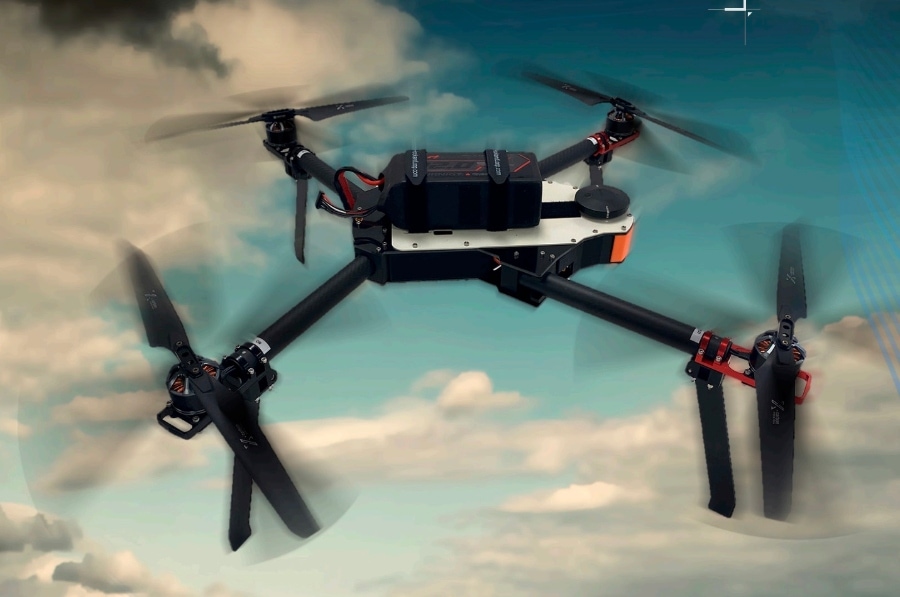

Credit: Blue Halo
The IE-V2 Jeti is a compact and versatile unmanned aerial vehicle (UAV) designed for various mission-critical operations.
IE-V2 Jeti Specs & Features
- Design and construction. The IE-V2 Jeti is a coaxial UAV built with durable materials like polycarbonates, composites, and aluminum, making it ideal for demanding environments.
- Weight and payload capacity. Maximum takeoff weight of 13.5 lbs (6.1 kg) and supports a maximum payload of 6.5 lbs (3.0 kg). This capacity allows for dual payloads, either on the top or bottom of the UAV.
- Flight endurance and speed. Significant endurance, with varying flight times depending on the payload. It can reach a top speed of over 60 miles per hour, making it suitable for rapid response scenarios.
- Environmental adaptability. IP56 rated, indicating a high level of protection against harsh environmental conditions, including heavy rain and wind.
- Customization and payload options. Adaptability with dual quick-attach fittings for payloads and batteries, supporting a wide range of configurations for different missions.
Learn more on the Blue Halo website.
4. Easy Aerial
Blue UAS from Easy Aerial:
- Osprey
About the Osprey
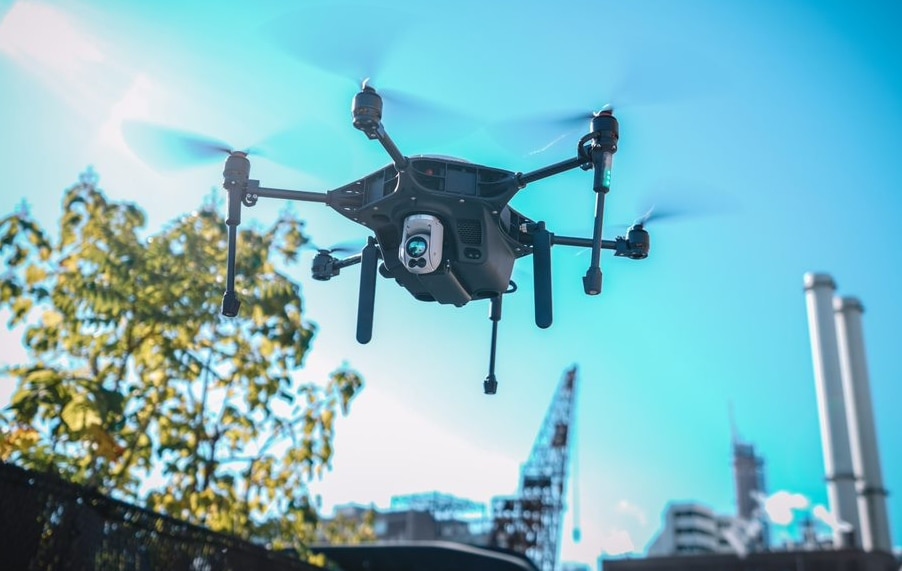
The Osprey is a robust hexacopter notable for its carbon composite construction and motor redundancy, which help enhance its reliability. The combination of durability, payload capacity, and all-weather capability make the Osprey suitable for a variety of missions, particularly in adverse conditions.
Osprey Specs & Features
- Weight and payload capacity. Weight of 12 pounds (5.5 kg ) without payload. Can carry up to 6.6 pounds (3.0 kg) of payload.
- Flight time and range. 55 minute flight time and range of 12.4 miles (20 km).
- Top speed and weather endurance. Can reach a top speed of 62.13 mph (100 km/h) and is designed to operate in all weather conditions, including rain, snow, and fog.
- Versatile payload options. Supports a range of payloads, including Nighthawk, Echodyne Radar, LED Lights, Speakers, Dragoneye, Spinning LiDAR, Multispectral Camera, and Thermal Camera.
Learn more on the Easy Aerial website.
5. Flightwave
Blue UAS from Flightwave:
- Edge 130
About the Edge 130


Watch this video on YouTube
The Edge 130 by FlightWave is a military-grade tricopter designed for long-range mapping, inspection, surveillance, and reconnaissance missions. The combination of endurance, speed, and payload flexibility makes the Edge 130 Blue suitable for a range of government and military applications.
Edge 130 Specs & Features
- Weight. Approximately 2.65 pounds (1,200g), allowing for easy transport and deployment.
- Flight time. An incredible 125 minutes of battery life, which is one of the longest flight times of any professional drone on the market.
- Speed and wind resistance. Can reach a maximum cruise speed of 62 mph (100 kph) and withstand wind speeds up to 40 mph (64 kph).
- VTOL-enabled. Features vertical take-off and landing capabilities, enabling it to operate in varied environments.
- Payload options. Supports quick and tool-free swapping of various payloads, increasing its versatility for different mission requirements.
Learn more on the Flightwave website.
6. Freefly Systems
Blue UAS from Freefly Systems:
- Alta X
About the Alta X


Watch this video on YouTube
The Alta X is a high-performance drone known for its combination of payload capacity, flight endurance, and adaptability, making it suitable for a range of professional and industrial applications.
Alta X Specs & Features
- Weight and payload. The Alta X has a maximum takeoff weight of 77 pounds (34.86 kg) and can carry a maximum payload of 33 pounds (15.06 kg), making it a strong option for carrying cargo or professional gear.
- Flight controller and modes. Features a custom PX4 flight control stack and supports various flight modes, including manual, altitude, and mission.
- Flight time. 55 minutes with no payload, 22 minutes with a 20 pound payload.
- Environmental tolerance. Designed to operate in challenging conditions, providing versatility for different operational environments.
Learn more on the Freefly Systems website.
7. Harris Aerial
Blue UAS from Harris Aerial:
- H6 Electric
- H6 Hydrone
- H6 EFI
About the H6 Electric


Watch this video on YouTube
The Carrier H6 Electric is a long-duration, heavy-lift hexacopter, notable for its efficient battery-powered design. Its blend of payload capacity, flight time, and speed makes it suitable for various applications like surveying and cargo delivery.
H6 Electric Specs & Features
- Max payload. The H6 Electric can carry a maximum payload of 17.6 pounds (8 kg).
- Flight time. Maximum flight time of 48 minutes—making it one of the most efficient multirotors in the heavy-lift category.
- Size and portability. The drone has a diagonal wheelbase of 5.3 feet, which folds down to 2.1 feet for easier transportation.
- Speed. Maximum speed of 33 mph.
Learn more on the Harris Aerial website.
8. Inspired Flight
Blue UAS from Inspired Flight:
- IF 1200A
- IF 800
- IF 750
About the IF 1200A


Watch this video on YouTube
The IF1200A drone is designed for heavy-lift operations, with a focus on adaptability and endurance. These features, coupled with its capacity to integrate various payloads for different applications, make the IF1200A a versatile choice for tasks as diverse as power line inspections, LiDAR mapping, and emergency response.
IF 1200A Specs & Features
- Max flight time. About 43 minutes.
- Max payload. Capable of carrying up to 19.1 pounds.
- Max speed. Can reach speeds up to 56 mph.
- Wind resistance. Resistance to winds up to 26.5 mph.
Learn more on the Inspired Flight website.
9. Parrot
Blue UAS from Parrot:
- Parrot ANAFI USA GOV
- Parrot ANAFI USA MIL
About the Parrot ANAFI USA GOV


Watch this video on YouTube
The Parrot ANAFI USA, GOV Edition is a versatile, high-performance drone designed for a variety of government and military applications, offering a blend of compactness, versatility, and performance.
Parrot ANAFI USA GOV Specs & Features
- Compact size and weight. With a folded size of 2 x 4 x 3 inches and a weight of just 1.1 pounds, the GOV is highly portable.
- Flight time and speed. Maximum flight time of 32 minutes and a maximum horizontal speed of 33 mph.
- Weather resistance and operating temperature. IP53 certified, making it dust and rain resistant, and can operate in temperatures ranging from -33 °F (-36 °C) to +122 °F (+50 °C).
- Imaging capabilities. Features dual sensors for EO (Electro-Optical) and IR (Infrared) imaging, with a digital zoom of 32x and a variety of photo and video resolution options.
Learn more on the Parrot website.
10. PDW
Blue UAS from PDW:
- C100
About the C100
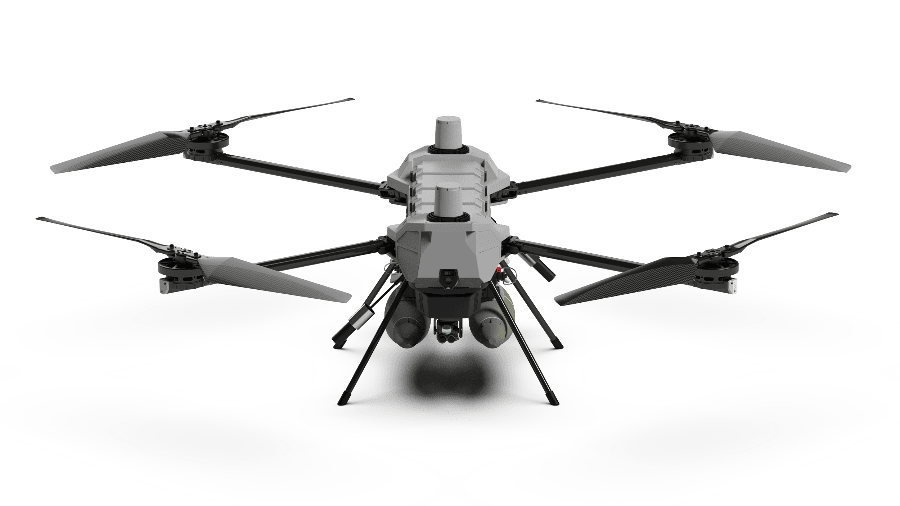

The C100 drone by PDW is a portable, long-endurance quadcopter notable for its combination of long flight time, substantial payload capacity, and adaptability. Its professional-grade specs make it suitable for a range of applications, including surveillance and reconnaissance missions.
C100 Specs & Features
- Flight time and payload. Can fly for up to 74 minutes with an ISR payload and has a maximum payload capacity of 15 pounds (6.8 kg).
- Dimensions and weight. The drone measures 15 x 24 x 13 inches when folded, and it weighs 21 pounds (9.6 kg).
- Range and speed. Range of 6 miles (10 km) and a maximum flight speed of 40 mph (64 km/h).
- Operational temperature. The C100 operates efficiently in temperatures ranging from -4º C to 134º F.
- Payload options. Offers various payload options, including high-resolution cameras and laser pointers.
Learn more on the PDW website.
11. Skydio
Blue UAS from Skydio:
- X2D Color 1.8 GHz
- X2D Color 5 GHz
- Thermal 1.8 GHz
- Thermal 5 GHz
- X2D Multiband
About the X2D


Watch this video on YouTube
The Skydio X2D is a rugged, portable UAS designed for situational awareness, asset inspection, and security patrol. Its specifications make the Skydio X2D an advanced tool for defense and public safety applications, offering high-end imaging capabilities and robust operational flexibility.
X2D Specs & Features
- Camera. Equipped with a 4K60P HDR color camera and a FLIR® 320p thermal sensor.
- Battery life. Up to 35 minutes.
- Wireless range. Capable of a wireless range of 3.7 miles (km) with 5GHz or 6.2 miles (10 km) with 1.8GHz.
- Autonomy. Features 360° obstacle avoidance powered by Skydio Autonomy technology.
- Operational capabilities. Suitable for night operations with GPS flight and strobe lighting, making it versatile for various mission scenarios.
Learn more on the Skydio website.
12. Teal Drones
Blue UAS from Teal Drones:
- Teal 2
- Golden Eagle
About the Teal 2


Watch this video on YouTube
The Teal 2 drone is equipped with advanced features, including a dual-axis electro-optic/infrared gimbal system and a FLIR Hadron 640R sensor for high-quality thermal imaging. Its compact and sturdy design makes it suitable for various applications, including reconnaissance and surveillance missions.
Teal 2 Specs & Features
- Weight. 2.75 pounds (1.25 kg).
- Flight time. About 30 minutes.
- Speed. Can reach a speed of 23 mph.
- Maximum altitude. Capable of reaching up to 10,000ft above mean sea level (MSL).
Learn more on the Teal Drones website.
13. Vantage Robotics
Blue UAS from Vantage:
- Vesper
About the Vesper


Watch this video on YouTube
The Vesper drone is a military-grade ISR (Intelligence, Surveillance, Reconnaissance) drone designed for field operations. It’s known for extended flight time, low light performance, and a 3-axis stabilized tri-sensor payload.
Vesper Specs & Features
- Camera. Comes with dual low light EO + IR, 320p thermal, and 48x zoom on a 3-axis stabilized gimbal.
- Flight time, speed, and range. 50-minute flight time, top speed of 45 mph, and a 28-mile flight range.
- Portability and robustness. Weighing just 2.2 pounds, the Vesper is protected by an IP64 waterproof and crush-proof case, making it both portable and durable.
- Security. Features AES-256 encryption, secure boot, and is NDAA compliant—the Vesper is designed, sourced, and built in the USA.
Learn more on the Vantage Robotics website.
14. Wingtra
Blue UAS from Wingtra:
- Wingtra One
About the Wingtra One


Watch this video on YouTube
The WingtraOne is a vertical take-off and landing (VTOL) mapping drone known for its precision and ability to cover large areas. These features make the WingtraOne an effective tool for large-scale surveying and mapping operations.
Wingtra One Specs & Features
- Weight and payload. Weighs 8.1 pounds (3.7 kg) and can carry a maximum payload of 1.8 pounds (800 g).
- Flight time and speed. The WingtraOne can fly for up to 59 minutes and has a maximum flight speed of 35.8 mph.
- Wind resistance. Can operate in wind conditions of up to 27 mph sustained and 40 mph gusts.
- Operational temperature range. The drone can function in temperatures from 14 to 104 °F.
- Mapping accuracy. Offers high-precision mapping capabilities, particularly when equipped with PPK technology.
Blue UAS Requirements
Achieving Blue UAS status signifies that a drone is trustworthy, secure, and capable of meeting the exacting demands of government and military operations.
To attain the Blue UAS designation, a drone must meet strict requirements that ensure its security and operational integrity so that it can be trusted for sensitive government and defense applications.
In addition to meeting high security standards, the drone must also be robust and capable enough to actually do the work needed.
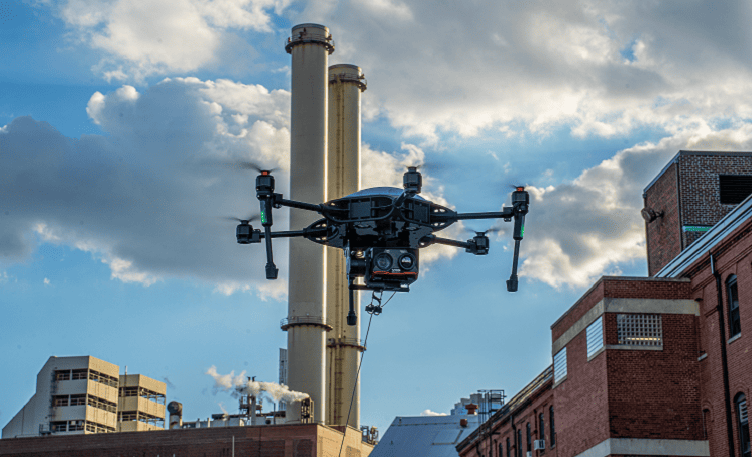

The Osprey | Credit: Easy Aerial
Here’s an overview of the key requirements a drone must meet to get added to the Blue UAS list.
1. Security Compliance
Blue drones must adhere to strict cybersecurity protocols, including data encryption and secure communication channels, to protect against unauthorized access or data breaches.
2. Manufacturing Standards
Blue UAS are typically manufactured in the United States or by close allies, ensuring the integrity of the supply chain and reducing the risk of foreign surveillance or sabotage.
3. Operational Capabilities
Drones must demonstrate advanced operational capabilities suitable for military or federal government use, such as tactical reconnaissance and surveillance.
4. Technical Performance
High-level technical performance in areas such as flight duration, payload capacity, and navigation accuracy is essential.
5. Testing and Validation
Rigorous testing and validation are required to prove the drone’s performance, durability, and reliability in various operational scenarios.
The 4 Phases of the Blue UAS Program
So how does a drone actually meet these requirements? That is, what does a drone company have to do to get its drone added to the Blue UAS list?
To become a Blue UAS, a drone must go through a stringent vetting process established by the DOD’s Defense Innovation Unit (DIU).
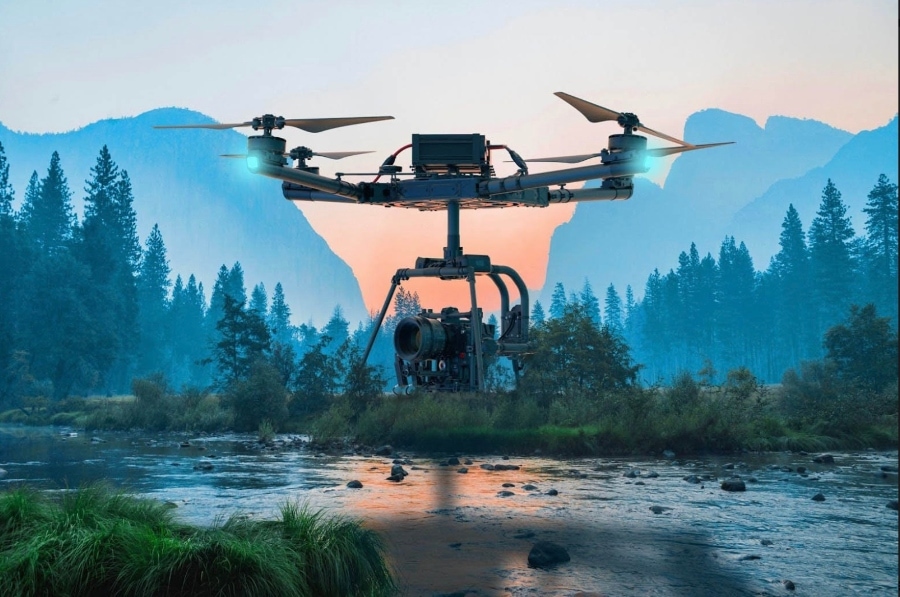

The Alta X | Credit: FreeFly Systems
Here are the four phases that every drone must go through in order to get added to the list.
Phase 1—Blue UAS Framework
This initial phase involves the development of components and software. The DIU provides guidance to ensure that the final product meets their criteria.
Phase 2—Foundry Process
In this phase, design teams work on prototypes based on suggestions from federal users to create products that meet specific needs.
Phase 3—On-Ramp
This step represents a streamlined drone approval process, marking the drone as ready for government procurement. It ensures that drones are robust and secure for government use.
Phase 4 —Blue UAS Cleared List
Drones that successfully pass the previous steps are added to the DIU Blue UAS list. The list is updated regularly to include drones that meet evolving mission needs.
Key Considerations for Drone Companies
Getting your drone added to the Blue UAS list could be a game changer for your company, opening the door to lucrative government contracts and establishing your security credibility to boost sales to private companies.
But the process isn’t easy, and it can be pretty expensive.
For most companies, getting through the phases listed above is resource-intensive, requiring substantial investment in research, development, and testing to meet the DOD’s standards.
If you work at a drone company that’s thinking about going through the process, here are some things to keep in mind.
1. You’ll Need a DOD Sponsor
A DOD sponsor is required for a drone to be considered for the Blue UAS program. The sponsor should be willing to fund initial and ongoing platform compliance and cybersecurity testing and intend to purchase the platform upon its addition.
2. Your Drone Should Have a Unique Capability or Serve a Unique Need
The drone should offer a new capability or meet a need in a way not previously done by existing blue drones, and not be duplicative of UAS that are already available.
3. Commitment to Continuous Improvement
Your company should be committed to ongoing development and enhancement of the platform and its capabilities.
4. Compliance with Laws and Cybersecurity
The drones your company makes must be compliant with legal standards and thoroughly vetted for cybersecurity.
What Is the Difference Between Green and Blue UAS?
The main differences between Green UAS and Blue UAS are:
- The drone’s level of security compliance
- The drone’s geographical source of manufacturing
- The drone’s intended use or application
While Blue UAS are designed for secure, government-sanctioned operations, Green UAS cater to a broader, often less security-sensitive market. This distinction is crucial for government and military entities that require the highest standards of security and reliability in their unmanned aerial operations.
Green UAS
Green UAS refers to consumer or commercial drones that are not subject to the same stringent security and manufacturing standards as Blue UAS.
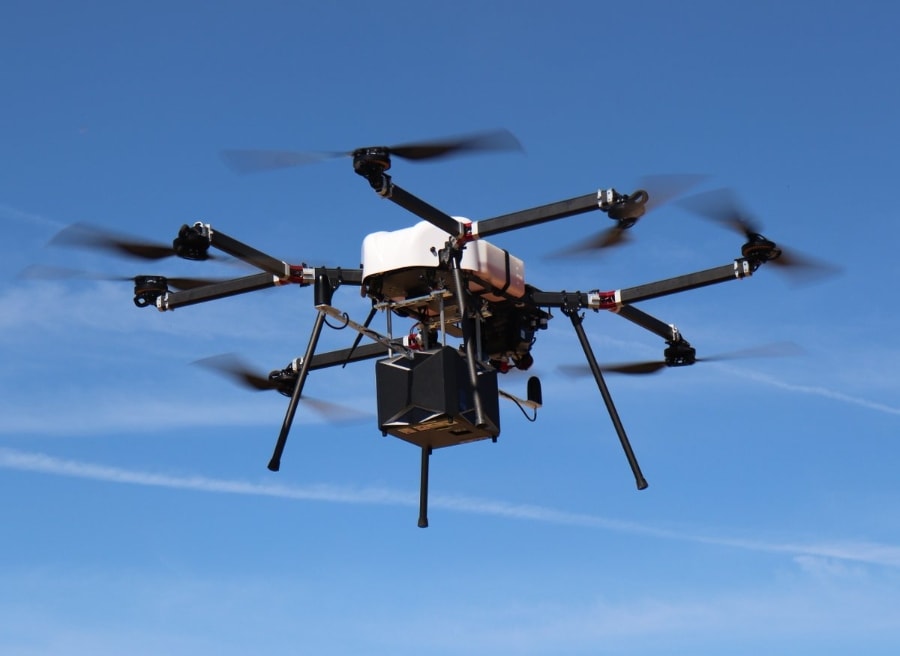

The Perimeter 8 | Credit: Skyfront
Green UAS:
- Have a relatively low level of security compliance
- May not comply with the NDAA’s requirements regarding the geographical source of manufacturing (i.e., they might be made in or contain parts from a covered foreign country)
- Are intended for commercial uses or applications that don’t relate to matters of national security
Green UAS are more widely available and used for a variety of purposes, including recreational, agricultural, and industrial applications.
While they may offer high functionality and versatility, Green UAS are not vetted for security risks at the level required for defense and national security operations.
Blue UAS
On other hand, Blue UAS—as we’ve covered in detail above in this guide—are drones that have met rigorous requirements established by the DOD and subsequently been approved for use by the federal government.
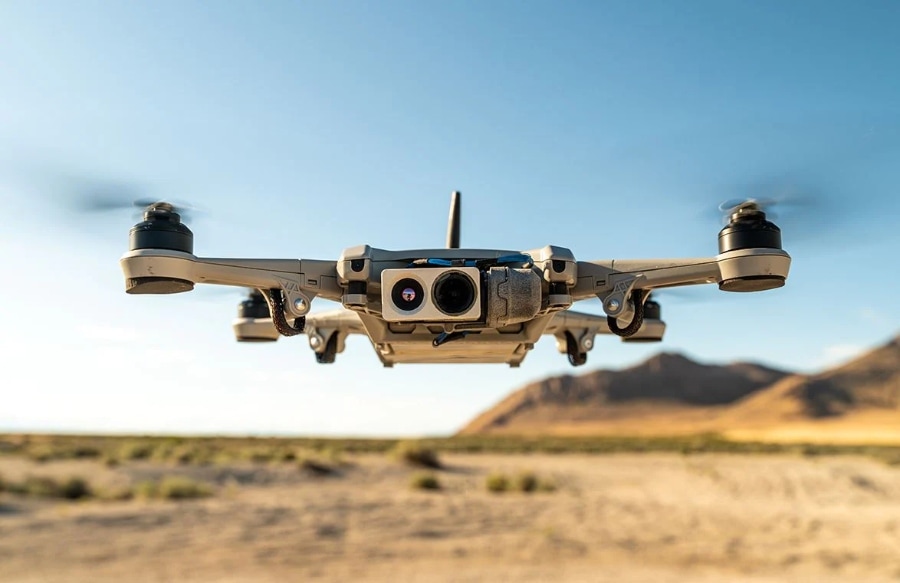

The Golden Eagle | Credit: Teal Drones
Blue UAS:
- Have a very high level of security compliance
- Comply with the NDAA’s requirements regarding the geographical source of manufacturing (i.e., they are not made in nor contain parts from a covered foreign country)
- Are intended for governmental uses and applications that may relate to matters of national security


